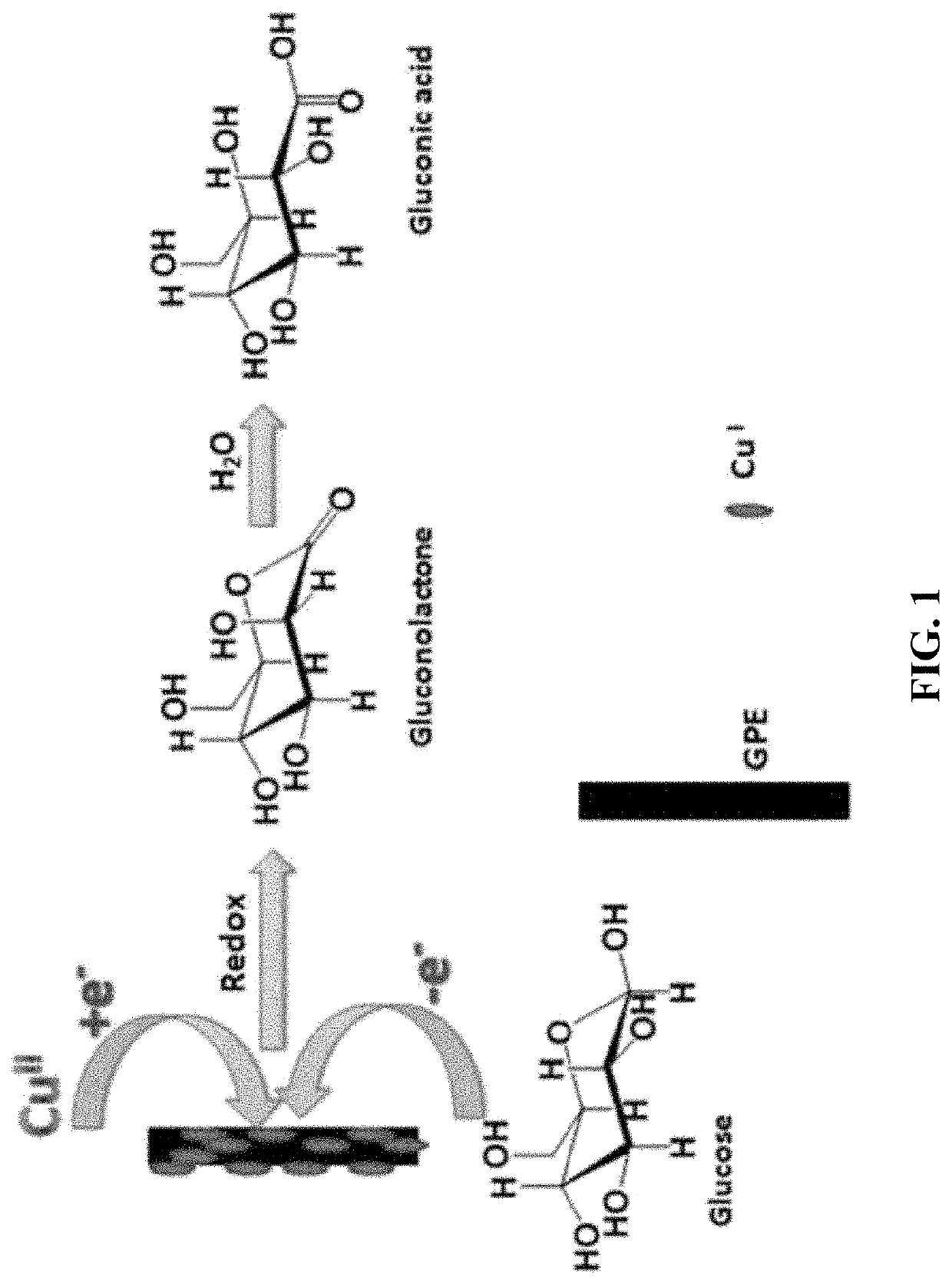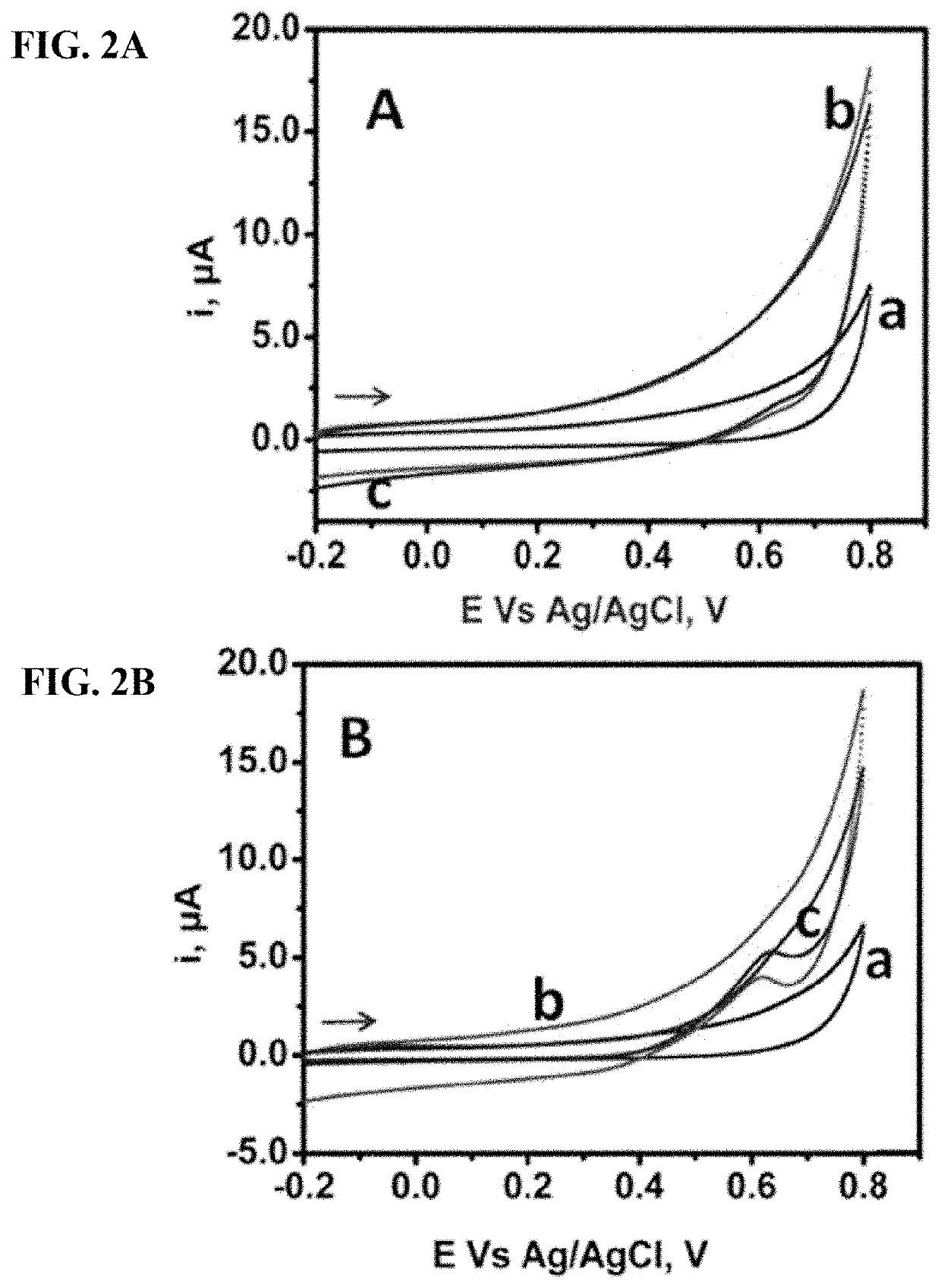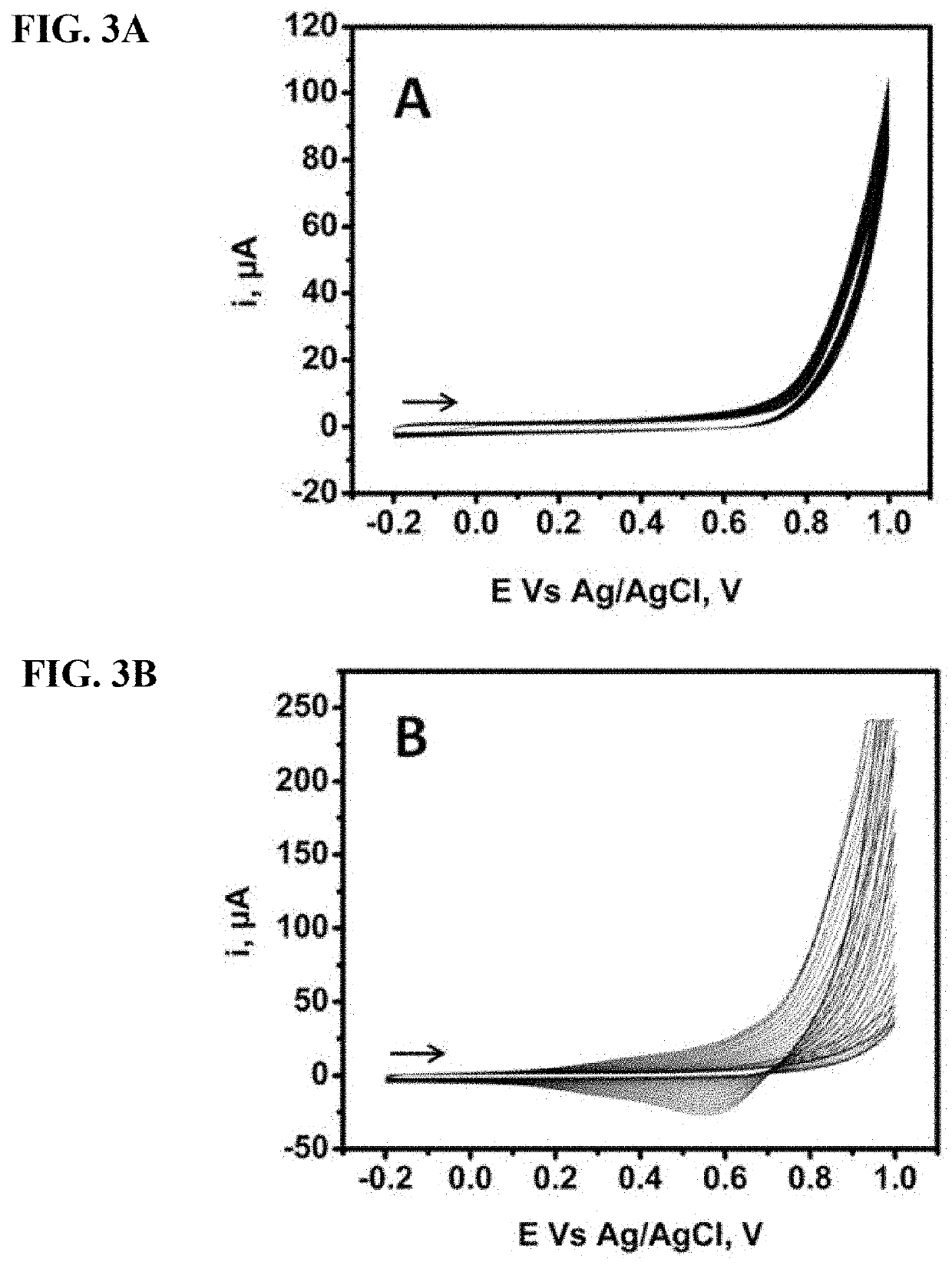Detection of serum methionine and glucose by graphite pencil electrode
a graphite pencil and serum methionine technology, applied in the field of serum methionine and glucose detection by graphite pencil electrodes, can solve the problems of complicated, limited performance, and achieved with a single-use devi
- Summary
- Abstract
- Description
- Claims
- Application Information
AI Technical Summary
Benefits of technology
Problems solved by technology
Method used
Image
Examples
example 1
Materials and Methods for Glucose Detection
Chemicals
[0144]A Cu AAS specification standard solution (1000ppm±4.0) was prepared with nitric acid (HNO3) and sodium phosphate mono-basic anhydrous (NaH2PO4) obtained from Fluka. Sodium phosphate di-basic anhydrous (Na2HPO4), sodium hydroxide pellets, D-glucose, uric acid (UA), D-fructose, L-ascorbic acid (AA), and L-alanine were all used as purchased from Sigma-Aldrich. All solutions were prepared with double distilled water obtained from an AQUATRON water still A4000D water purification system.
Electroanalytical Apparatus and Procedures
[0145]The three electrode system comprises a pencil, made in Korea, which has a graphite lead that can be propelled or extruded mechanically as a working electrode, an Ag / AgCl saturated KCl electrode as a reference electrode, and platinum wire as a counter electrode. These three electrodes were connected with a CHI potentiostat workstation (CH11140A, CH Instruments Inc, Austin, Tex., USA) for all electroche...
example 2
Results and Discussion for Glucose Detection
Redox Reactions of Glucose in the Presence of Copper on GPE
[0149]In the absence of Cu, as shown in curves “b” and “c” of FIG. 2A, a secondary oxidation peak of 2 mM and 4 mM glucose respectively can be observed at about 0.63 V on a bare GPE in 0.10 M NaOH. This is due to the graphitic nature of GPE as compared to other solid electrodes that could not show similar response without any surface modifications. However, enhanced peaks of glucose were observed in in curves and “c” of FIG. 2B for the same glucose concentrations as in FIG. 2A due to the presence of 5.00 ppm Cu(NO3)2 solution. However, no redox peaks of Cu could be noticed in curve “a” of FIG. 2B despite the presence of the 5.00 ppm Cu(NO3)2 solution. Oxidation peaks could not be observed either is due to the presence of Cu in form of Cu2+ in the medium which could no longer be oxidized, or because of the lower concentration of Cu accumulated on GPE which might be below the detecti...
example 3
Materials And Methods For Methionine Detection
Chemicals
[0164]1000 mg / L±4.00 Ag standard was prepared in nitric acid having a AAS specification from Fluka. NaOH pellets, DL-methionine, L-ascorbic acid, L-alanine, and L-cysteine were supplied by Sigma-Aldrich. For the supporting electrolyte, phosphate buffer solution, pH 7.00, 0.10 M, was prepared by mixing appropriate volumes of 0.20 M monosodium phosphate and disodium phosphate prepared with double distilled water and sodium acetate. These salts were all used as collected from Sigma-Aldrich. All solutions were prepared with double distilled water obtained from AQUATRON water still A4000D water purification system.
Electrochemical Cell and Procedure
[0165]A system comprising 3 electrodes was utilized with 0.10 M NaOH and phosphate buffer solution (PBS) as supporting electrolyte. PBS was prepared with appropriate mixture of sodium phosphate mono and di-basic anhydrous salts. The working electrode is a graphite pencil lead whose fabricat...
PUM
 Login to View More
Login to View More Abstract
Description
Claims
Application Information
 Login to View More
Login to View More - R&D
- Intellectual Property
- Life Sciences
- Materials
- Tech Scout
- Unparalleled Data Quality
- Higher Quality Content
- 60% Fewer Hallucinations
Browse by: Latest US Patents, China's latest patents, Technical Efficacy Thesaurus, Application Domain, Technology Topic, Popular Technical Reports.
© 2025 PatSnap. All rights reserved.Legal|Privacy policy|Modern Slavery Act Transparency Statement|Sitemap|About US| Contact US: help@patsnap.com



